File Gateway
- File gateway appliance is a virtual machine to bridge between your NFS and S3
- Metadata and directory structure are preserved
- Configured S3 buckets are accessible using the NFS and SMB protocol
- Each File Gateway should have an IAM role to access S3
- Most recently used data is cached in the file gateway
- Can be mounted on many servers
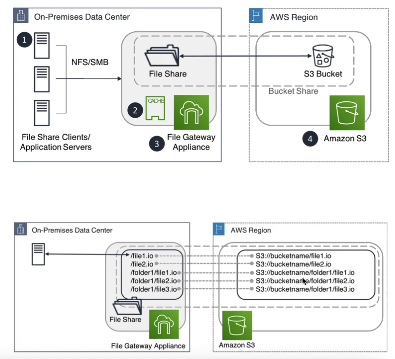
- You can use S3 events to connect to Lambda
- Do analyis use Athena
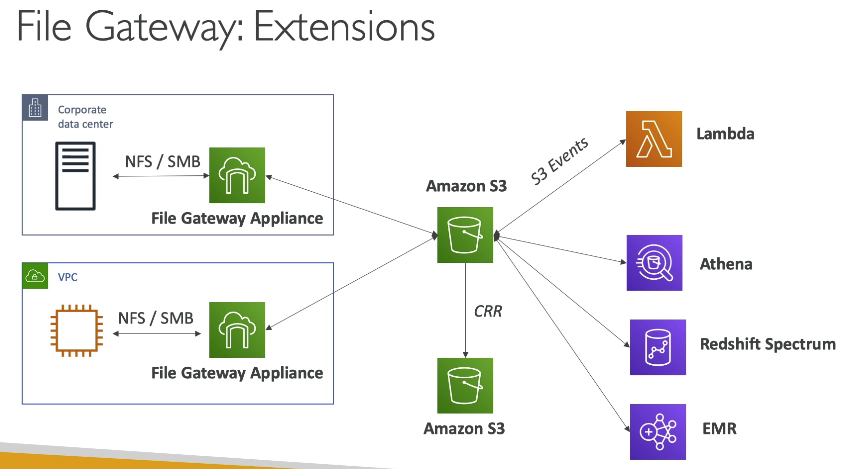
- You can set on-premise 1 to sync files to S3
- Then setup on-premise 2 to read file from S3 (read-only)
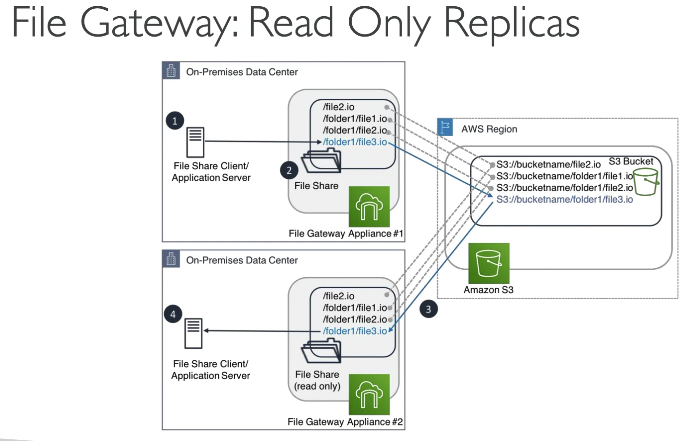
File Atchitectures: Other possibilites
Amazon S3 Object Versioning
- Ability to store multiple object versions as they are modified
- Helpful to restore a file to a previous version
- Could restore an entire file system to a previous version
- Must use the "RefreshCache" API on the Gateway to be notified of restore
Amazon S3 Object Lock
- Enables to have the file gateway for Write Once Read Many (WORM) data
- If there are file modifications or renames in the file share clients, the file gateway creates a new version of the object without affecting priori version, and the original locked version will remain unchanged
Volume Gateway
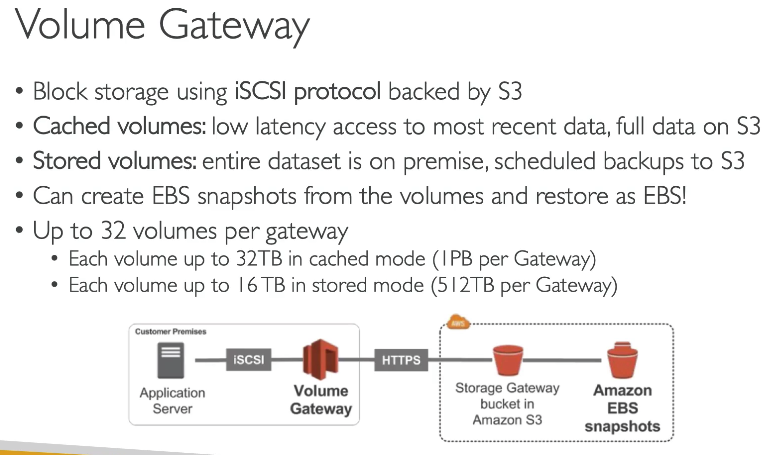
- iSCSI protocol
- Need to restore as EBS volume

- iSCSI interface
- CANNOT access single file within tpes. You need to restore the tape entriely. File Gateway can access single file
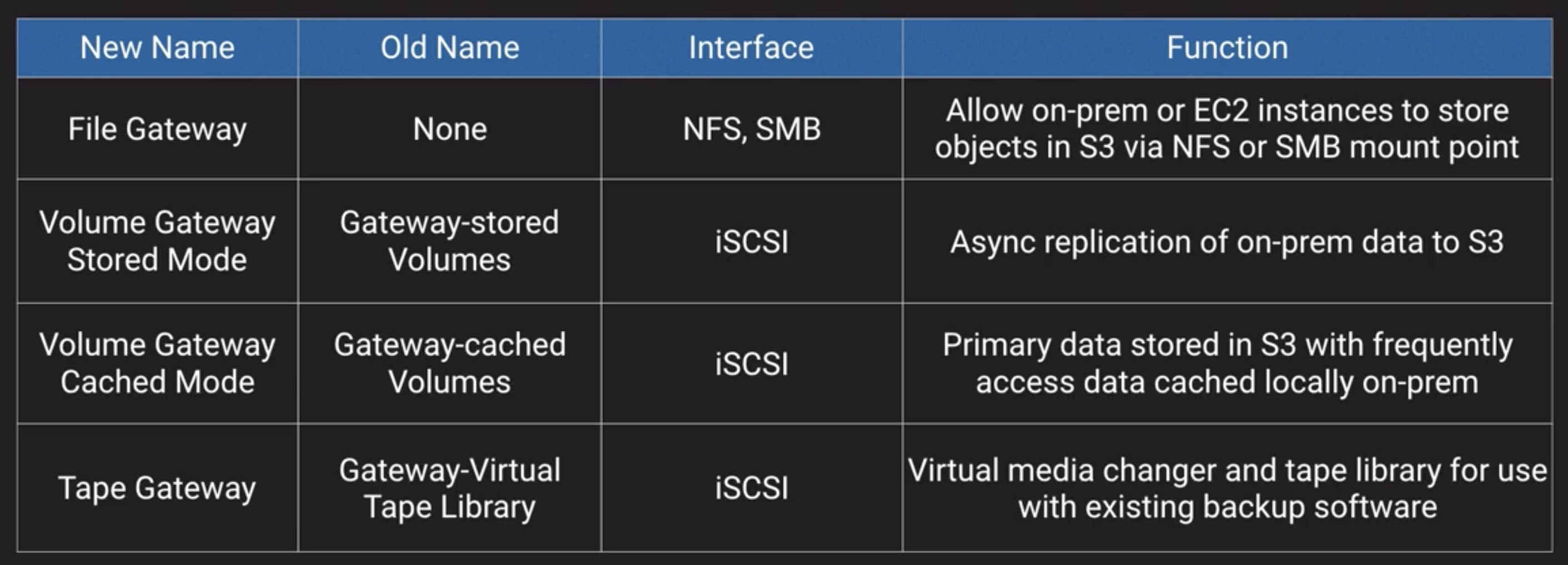
- File gateway, NFS, SMB interface, backed by S3
- Volume Gateway, backed by S3, iSCSI interface
- Stored mode: mainly store the data on-premise
- Cached mode: only store cached file on-premise, mainly store in S3
- Store mode and Cache mode can change in time: for example, slowly migrate from on-premise to cloud by using Stored mode; when data is mainly on S3, then change to Cached mode, on-premise only keeps cached files.
- Tape gateway, iSCSI interface.